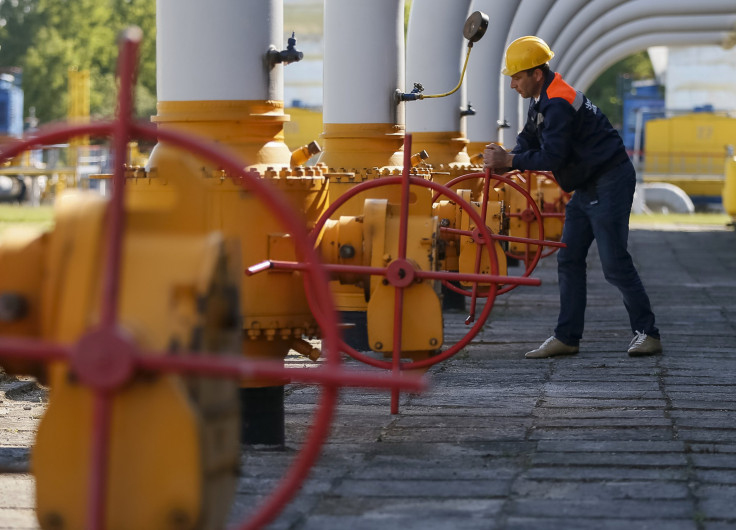Russia’s Gazprom: Baltic Sea Gas Pipeline Controversy Set To Split EU Over Russia Policy — Again

If a group of big European energy companies and Russian giant Gazprom have their way, a controversial new natural gas pipeline will one day lie on the floor of the Baltic Sea. It will sit right next to an existing natural gas pipeline that a virtually identical group of European energy firms and Gazprom officially proposed and built a decade ago.
The prospect of ever-greater dependence on Russian gas has produced a split in Europe that’s even nastier than the last time around, and it has generated new friction with the United States.
This week, the vice president of the European Commission, Maroš Šefčovič, will propose new rules for gas users that aim to curb the bloc’s appetite for Gazprom’s product by setting boundaries for how gas producers and transmitters interact. The initiative comes despite pressure from Germany, where the bulk of the energy companies are headquartered, for Brussels to keep politics out of the pipeline.
But politics are ever-present in European energy debates, and Russia, to a great extent, put them there. Since the first pipeline was built, Russia reduced gas supplies to Ukraine, fostered an insurgency on the country’s eastern border and even sent menacing signals toward EU and NATO members Latvia, Lithuania and Estonia.
“There’s a Russia that invaded Ukraine. And there’s a Russia that is threatening the Baltic states,” said András Simonyi, managing director of the Center for Transatlantic Relations at Johns Hopkins University. “That’s the Russia we are dealing with now.”
The new pipeline, named Nord Stream 2 after the first version, is a project of Gazprom and E.ON and BASF/Wintershall of Germany, OMV of Austria, Engie of France and Royal Dutch Shell of the Netherlands. Like its older sibling, Nord Stream 2 would bring gas from a terminal near St. Petersburg to the northern German coast.
German Chancellor Angela Merkel and her economy minister, Sigmar Gabriel, have portrayed the venture in strictly commercial terms, a deal to deliver Russia’s natural gas to an energy-hungry European public.
The stance has produced outrage in Central and Eastern Europe, especially in Poland, which has accused Berlin of wanting to outflank its ostensible partners in the EU for the sake of a lucrative venture with the Russians. They insist the project should be considered in the context of the political situation with Russia, especially in Ukraine, and that it should face a review in Brussels, since the EU is committed to a more integrated energy market.
They have an ally in Šefčovič, an energetic Slovak diplomat who is also top EU official for promoting its “Energy Union.” Šefčovič wants to use the leverage of the EU’s internal rules, which promote competition by preventing operators of gas distribution networks from reducing competition among suppliers.
“This project has a lot of very, I would say, complex political ramifications and it has a lot of also regulatory questions,” Šefčovič said at a recent event in Washington. “Because it’s quite clear that if it comes to the project of this magnitude, it’s our duty in the European Commission to make sure that the European law is fully respected.”
European law is generally about competition and use of interconnected networks that can’t easily be replicated. They’ve been aimed at ensuring that competing gas providers can get the product where it needs to go. Šefčovič wants to go further and examine any intergovernmental agreements involved in pipelines.
When it comes to Russia, however, things get complicated.
Russia already tried reducing the gas it sends through Ukraine and on into Western Europe after the so-called Orange Revolution of 2004 and 2005, in which the country sought a more westward orientation after years of fealty to Russia. The Russian move triggered depictions of nightmare scenarios in Europe where radiators would go cold during winter, and the idea that Russia could “freeze out” Ukraine and Poland, through which pipelines run, has lurked over European energy debates.
That scenario is unlikely. The liquid natural gas industry allows gas to be transported to places where pipelines don’t go. And so-called “reverse flow” technology enables Western European operators to move gas back toward Eastern Europe if Russia ever squeezed supplies.
But reduced Russian usage of the pipelines in Ukraine could still hurt in other ways. European countries, and the United States, have invested heavily in the revival of the Ukrainian economy since 2014, when Russia backed separatists in its eastern province, resulting in a de facto partition of the country.
Ukraine gets about $2 billion in transit fees from Russian companies for use of its pipelines. Nord Stream 2 would, like Nord Stream 1 before it, cost Ukraine by outflanking it, a point the United States has made as well.
“This would significantly decrease Ukraine’s revenues and undermine the economics of investments in Ukrainian infrastructure that are badly needed for proper functioning of the system,” said Agata Łoskot-Strachota, a senior fellow for energy policy at the Center for Eastern Studies in Warsaw.
The hardest part of the new Nord Stream pipeline might simply be the message it sends to Moscow about the EU’s ability to speak with one voice, Simonyi said.
The 28 EU members have resolved to improve the functioning of their own natural gas market, and bind it more tightly together to ensure consumers get the best possible prices and the bloc as a whole has secure sources.
“It’s not that the lights will go out. But Europe would be circumvented,” Simyoni said. “You don’t want that. You want an integrated energy market.”
© Copyright IBTimes 2025. All rights reserved.





















